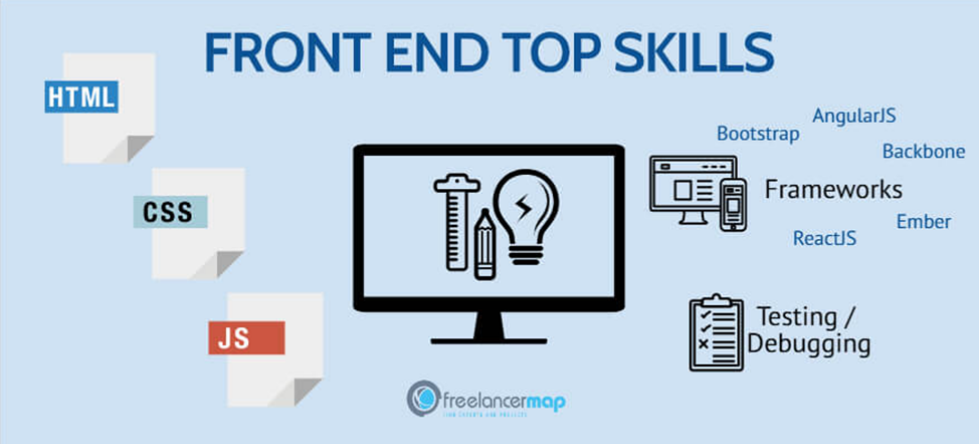BLACK FRIDAY
85% Discount for all November
85% Discount for all November

JavaScript
Front end
HTML
This blog is all about the Basics of the Front-end. I hope this blog is beneficial to understanding the basics of the front end. Front-end developer skills are technical and soft skills that help a developer create and manage the front end of an application or website. So let's begin with the topic BASICS OF FRONT END DEVELOPMENT.

In a nutshell, front-end web development, also called client-side development, refers to writing HyperText Markup Language (HTML), Cascading Style Sheets (CSS), and JavaScript code for a website or web application so that users can see and interact directly with them.
These are the skills and expertise a front-end developer should possess.
· Proficiency in HTML and CSS.
· JavaScript basics.
· Cross-browser compatibility.
· Responsive design.
· UI frameworks and CSS-transforming tools.
· 2D and 3D graphics.
· User Accessibility.
· Graphic design and Typography.
What is Front-End Development?
The front-end can be seen as customer-side development and refers to the component of the program that customers can view and interact with.
The responsibility of a front-end developer is not restricted to the implementation of visual components alone. It also involves designing and managing interactive functions, such as navigation, buttons, and anything else that impacts the application's functionality.
What Should Front-End Developers Know?
HTML, CSS, and JavaScript are the fundamental toolkit for a front-end developer. In addition, package managers, CSS preprocessors, frameworks, and other front-end development tools can all be added.
HTML: the Key Front-End Technology
HTML (Hypertext Markup Language) is a computer language used to build web pages that anyone can see with an Internet connection.
HTML is made up of tags, which are shortcodes normalized into a text file by the site designer. The text is subsequently saved as an HTML file, which may be viewed using a browser. The browser scans the file and transforms the text into a visually accessible form.
CSS: Styling your Façade
CSS (Cascading Style Sheets) is a language for creating style sheets. It specifies how HTML components appear on a web page in style, layout, and modifications for various devices and screen sizes. CSS is capable of mastering the design of several web pages simultaneously.
CSS interacts with HTML elements, which are the building blocks of a website. CSS utilizes selectors to connect with HTML. A selector is a component of CSS code that specifies which HTML elements will be affected by CSS style.
· A declaration contains properties and values that the selector employs.
· Properties define font size, color, and margins. Values are the settings for these properties.
External style sheets are saved as.css files and may be used to determine the design of an entire website with only one file, rather than adding several instances of CSS code to each HTML element that needs to be changed. To use an external style sheet, .html files must have a header section that links to the external style sheet.
DOM: The Web Page Structure
The structure of a web page is known as the Document Object Model (DOM). Likewise, a programming interface for HTML and XML documents is the Document Object Model (DOM). The document is rendered as nodes and objects, allowing programming languages to connect to the page.
Most Popular Front-End Development Languages
Here are some of the suggested top front-end development languages for you when developing and building the front-end of your website or program.
Famous websites:
1.eBay
2.Wikipedia
Famous Websites
2.Your Plan Your Planet
Famous Websites:
1.Fizz
2.Four Hundred Years
Famous Websites:
1.Asana
2.Airbnb
Famous Websites
1.Upwork
2.Netflix
Famous Websites:
1.GitLab
2.Behance
Famous Websites:
1.Elmify
2.UNLI Reverse Flight Search
Famous Websites:
1.Sky
2.Wix
Famous Websites:
1.Microsoft
2.Zoom
Famous Websites:
1.Toyota
2.Vox Media
This blog is all about the basics of the front end; I hope this was helpful to you.
See you in the next blog; thank you!
Monday, Apr 25, 2022